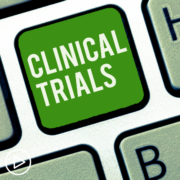Myeloma Treatment Decisions: What Should Be Considered?
Myeloma Treatment Decisions: What Should Be Considered? from Patient Empowerment Network on Vimeo.
When deciding on a myeloma treatment, what factors affect your choice? Dr. Joshua Richter shares key considerations, the patient role in making decisions, as well as key questions to ask about treatment
Dr. Joshua Richter is director of Multiple Myeloma at the Blavatnik Family – Chelsea Medical Center at Mount Sinai. He also serves as Assistant Professor of Medicine in The Tisch Cancer Institute, Division of Hematology and Medical Oncology. Learn more about Dr. Richter, here.
Related Programs:

Which Myeloma Patients Should Consider Stem Cell Transplant? |

Myeloma Treatment: When Should a Clinical Trial Be Considered? |

|
Transcript:
Katherine:
Dr. Richter, would you please start by introducing yourself?
Dr. Richter:
Sure, my name is Dr. Joshua Richter. I’m an Assistant Professor of Medicine at the Tisch Cancer Institute Icon School of Medicine at Mount Sinai and the Director of Myeloma at The Blavatnik Family Medical Center at Chelsea at Mount Sinai.
Katherine:
Great. Thank you. When making a treatment choice, what are three key considerations for myeloma patients?
Dr. Richter:
Absolutely. So, whenever we decide on treatment options, we consider three main topics: patient-related factors, disease-related factors, and treatment-related factors. So, patient-related factors are easy. How old or young are you? How fit or frail? Do you have any comorbidities, meaning other medical problems like heart disease or diabetes?
Disease-related factors are another important one. How aggressive is your disease? Is it rising up very quickly? Is it very slowly? Do you have something that we call extramedullary disease which means myeloma outside the bone marrow in the mass that we call a plasmacytoma? And that influences how we treat things.
And the last is treatment-related factors. What treatments have you, previously, had, how did you respond to them, and what side effects did you have?
If you developed a lot of neuropathy with one drug, we may not want to choose a drug that continues to have that type of side effect profile.
Katherine:
What’s the role as a patient in making treatment decisions?
Dr. Richter:
The role, from my standpoint of the patient, is honesty. You don’t get extra points for being in pain. I want to hear from you. I want you to tell me what your concerns are, short-term, long-term. I want you to tell me about little problems that you don’t – it’s not that you don’t want to bother your care team, we want to know.
Because something little may mean something big to us. So, all we want is for your well-being. And the better we keep those lines of communication open, the better.
Katherine:
Are there questions that patients should consider asking about their treatment plans?
Dr. Richter:
Absolutely. I think in a day and age where there’s so many different options, I think it’s always important to ask the care provider, what are the alternatives to this? Or why did you select this treatment for me? Because many times, there are alternative answers. So, in myeloma, there are a lot of options that may be good for someone. And the physician team may say we recommend this drug, and the patient may have trouble getting back and forth to clinic for logistical reasons. And there may be an all-oral alternative that if you don’t ask, we may not know that that’s going to be your preference. So, really that dialog is crucial.























